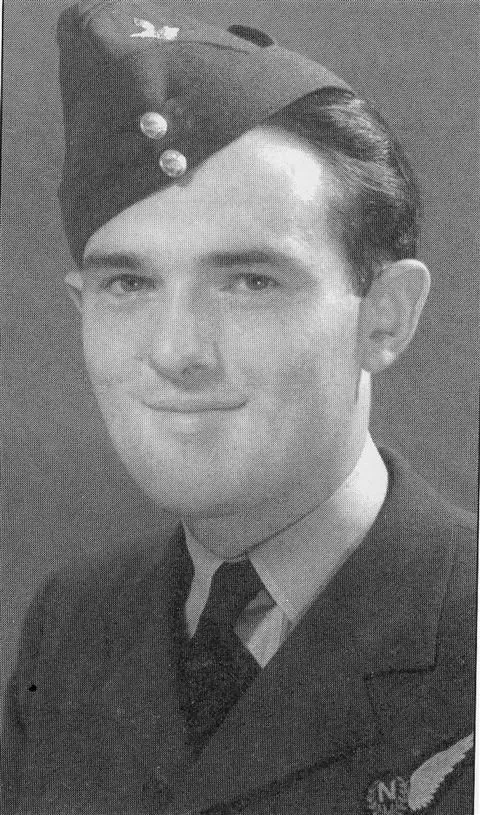Gibson, Guy Penrose (Wing Commander )
Killed in Action 1944-September-19
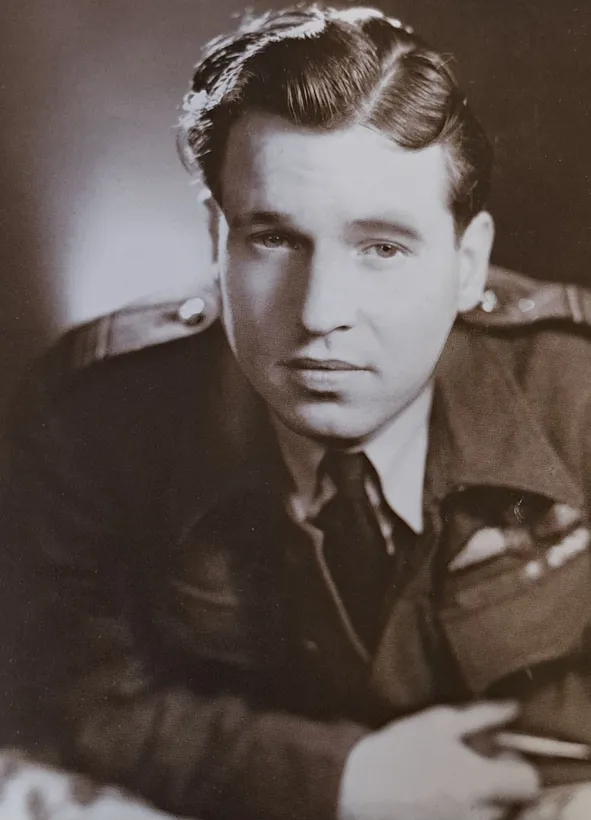

Birth Date: 1918-August-12
Born: Simla, Himachal Pradesh, India
Parents: Son of Alexander James Gibson and Norah Gibson
Spouse: Husband of Evelyn Mary (nee Moore) Gibson, of Westminster, London
Home: Westminster, London, England
Enlistment:
Enlistment Date: unkown date
Decorations: VC, DSO & Bar, DFC & Bar, LoM (USA)

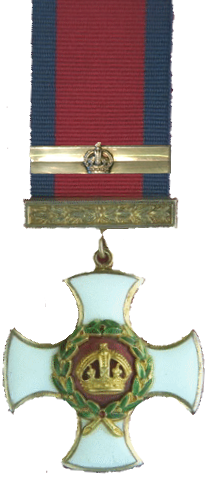
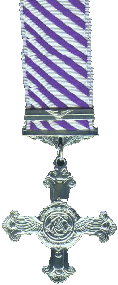
Service
RAF
Unit
5 (PFF) Group (RAF)
Base
54 Base at RAF Coningsby
Rank
Wing Commander
Position
Pilot
Service Numbers
39438
Target
Mission
Mosquito B.Mk. XX KB267
Bombing Monchengladbach Germany 1944-September-19 to 1944-September-19
627 (I) Sqn (RAF) RAF Woodhill Spa
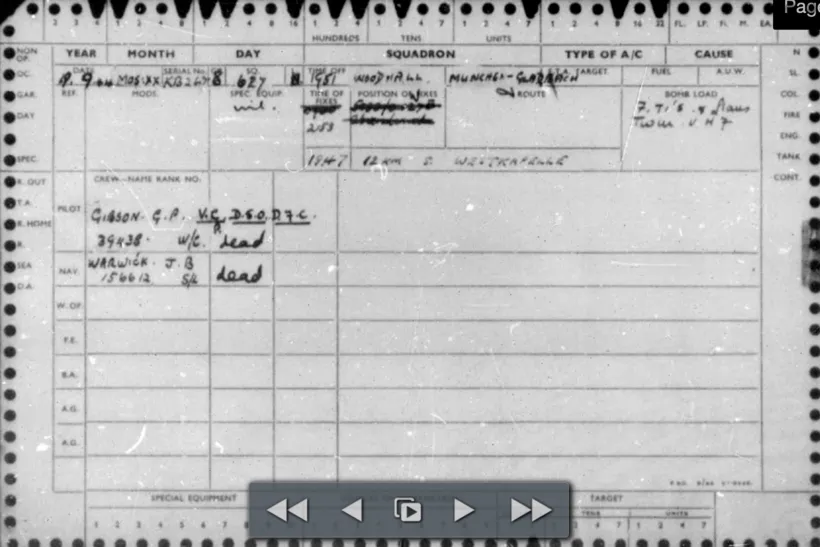
627 Squadron RAF (At first sight), RAF Woodhill Spa. 5 Group Wing Commander G P Gibson VC (RAF), who had previously led Lancaster aircraft from 617 Squadron in Operation Chastise, the Dambuster raid on the Sorpe, Mohne and Eder dams,1944-05-16/17 was now considered non-operational but wished to continue flying. With this in mind he assumed the role of Master Bomber for a Mosquito raid against targets in Monchengladbach/Rheydt, Germany, even though he had little experience with either target-marking or flying Mosquito aircraft. The officer Gibson intended to fly with as Navigator was ill and unavailable so he instead selected Squadron Leader J B Warwick DFC to fill this position. Warwick, as Station Navigation Officer, was also considered non-operational. Arriving at RAF Woodhill Spa, Gibson was offered the Squadron reserve aircraft, Mosquito KB 213 for the operation. For whatever reason, Gibson rejected KB 213 and demanded a different aircraft, choosing Canadian-built Mosquito BXX aircraft KB 267 AZ-E also displacing the crew originally assigned to KB 267 and proceeded with the mission. The target marking at Rheydt was not very successful for a number of reasons and Mosquito KB 267 eventually turned for home. Flying low over the Netherlands the aircraft abruptly rolled and flew into the ground, crashing and burning at Steenbergen, Noord Brabant, Netherlands with the loss of both Gibson and Warwick
Wing Commander G P Gibson VC, DSO and Bar, DFC and Bar (RAF) pilot and Squadron Leader J B Warwick DFC (RAFVR) were both killed in action
The cause of loss of the aircraft and crew was not absolutely determined. The aircraft was observed flying at low level when the engines cut out and it suddenly dived into the ground, which would suggest a possible fuel or engine issue. The aircraft loss does not appear on the 627 Squadron Operations Record Book because the aircraft was taken away from 627. The crash card for KB 267 indicates that it was flown by Gibson and Warwick and was missing on the date of the operation to Monchengladbach. Mosquito, Wooden Wonder by Edward Bishop, page 140 The Pathfinder Companion, War Diaries and Experiences of RAF Pathfinder Force - 1942-1945, page 160
![]() Royal Air Force Serial and Image Database
Royal Air Force Serial and Image Database
![]() A warrior's death I Flight Safety Australia
A warrior's death I Flight Safety Australia
![]() Memorial Crash Mosquito KB 267 - Steenbergen -TracesOfWar.com
Memorial Crash Mosquito KB 267 - Steenbergen -TracesOfWar.com
Mosquito serial: KB267
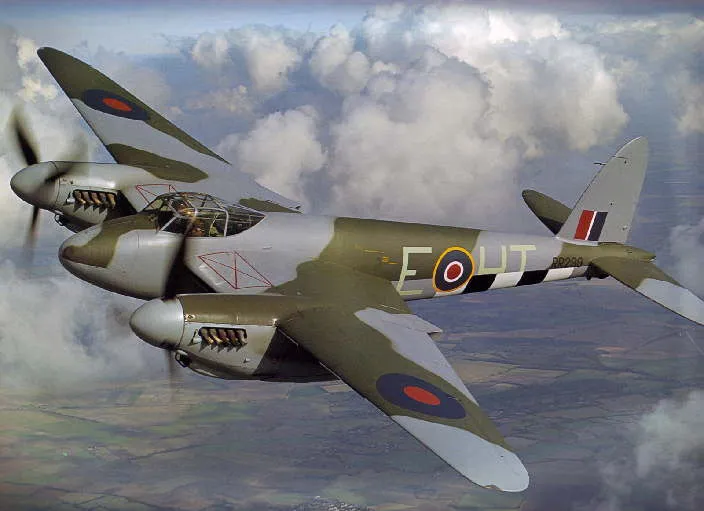
The de Havilland DH.98 Mosquito was a British twin-engine shoulder-winged multi-role combat aircraft, introduced during the Second World War. It was one of few operational front-line aircraft of the era whose frame was constructed almost entirely of wood. Nicknamed The Wooden Wonder, it was affectionately as the "Mossie" to its crews. The total number of DH98 Mosquito aircraft built was 7,781, the type serving with the main Allied air forces, including both the United States and Russia.
When Mosquito production began in 1941 it was the fastest propeller driven operational aircraft in the world. The first variant was an unarmed, high-speed, high-altitude photo-reconnaissance aircraft. Originally conceived as an unarmed fast bomber, the Mosquito's use evolved during the war into many roles including low to medium-altitude daytime tactical bomber, high-altitude night bomber, pathfinder, day or night fighter, fighter-bomber, intruder, and maritime strike aircraft. It was also used by the British Overseas Airways Corporation (BOAC) as a fast transport to carry small high-value cargoes to, and from, neutral countries, through enemy-controlled airspace. The crew of two, pilot and navigator, sat side by side, but a single passenger could ride in the aircraft's bomb bay when necessary.
The Mosquito FB Mk. VI was often flown in special raids, such as Operation Jericho, an attack on Amiens Prison in early 1944, and precision attacks against military intelligence, security and police facilities (such as Gestapo headquarters). On the 10th anniversary of the Nazi' seizure of power in 1943, a morning Mosquito attack knocked out the main Berlin broadcasting station while Hermann Goering was speaking, putting his speech off the air. Goering later said: "It makes me furious when I see the Mosquito. I turn green and yellow with envy. There is nothing the British do not have. They have the geniuses and we have the nincompoops."
The Mosquito flew with the RCAF and other air forces in the European, Mediterranean and Italian theatres. After the end of the Second World War Spartan Air Services flew 10 ex-RAF Mosquitoes, mostly B.35's plus one of only six PR.35's built, for high-altitude photographic survey work in Canada. There are approximately 30 non-flying Mosquitos around the world with five airworthy examples, four in the United States, and one in Canada. Harold Skaarup web page and Wikipedia
![]() BAE Systems (formerly De Havilland)
BAE Systems (formerly De Havilland)
